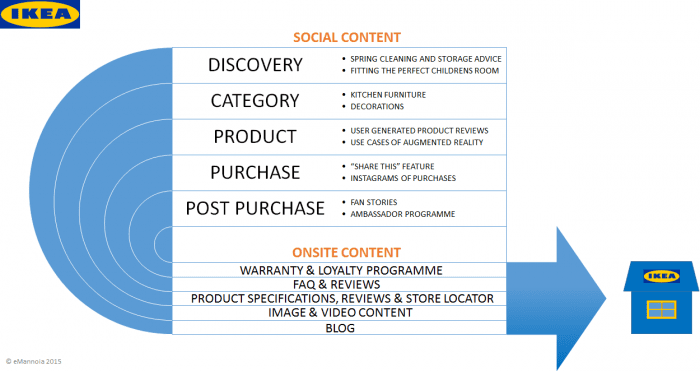Produce your content as part of a well-planned strategy to get the best results as shown by this hypothetical case study
Content has been a big buzzword for the last 12 months, and still drives a lot of conversation today. This has only been encouraged with Google’s updated algorithm last year. Content now plays a more pivotal role in search engine optimisation (SEO), as link based metrics are decreasingly used as the main ranking signal.
So yes, everyone’s churning out content, more and more – how many server farms will we need in 2030 to accommodate it all?! So what can brands do to make their content strategy work across channels and align with customer needs?
To really leverage the power of content, publishers and brands should employ carefully thought out strategies, as this will ensure maximum returns. Given the vast breadth of the topic I will primarily focus on social and digital content in this piece.
The place to start, as always, is with the key business objectives. Once distilled, you can link your content ideas with consumer interests and your goals.
One method for determining topic ideas around consumer interests is to conduct basic keyword research with SEO tools, such as the Google AdWords Keyword Planner, which highlights the most popular google searches for a given topic. This insight can then be integrated in your content strategy in the form of future blog pieces, video, images and more. Not covered here but not to be forgotten, is social media listening and all of the traditional content activities and tactics such as primary and secondary research, events and campaigns, market research etc. A great tool I can recommend is Buzzsumo which shows you which content for a particular word or phrase is being shared the most. However, never rely solely on tools and remember what you know about your audience.
Along with research and the business objectives you should also consider having different types of content for the different stages of the consumer journey. This varying content should match with corresponding pages on your website. The figure below illustrates how different social content at different stages of the consumer journey can connect with your onsite content. Creating that synergy can drastically improve awareness, consideration and on-site conversion. For the brick and mortar businesses this strategy can have a great impact on footfall.

Social Content And Onsite Content For IKEA (not actual IKEA data)
Aligning your social content with the different mind-sets of consumers will capture their attention with the right message and, more importantly at the early stages, the right format. Try to keep branding in the discovery and category stages to a minimal. Content here is meant to position you as a thought leader in that space, and is not merely another advertising channel to broadcast. I would however recommend including a link to your site in each piece of content, in particular a link to a corresponding section of your website. Bridging relevant website content with the social content someone just engaged with can help reduce the friction on their journey to a potential purchase.
Possible channel strategies for social content and the different consumer stages – IKEA
- Discovery (awareness): blogs, Facebook, Pinterest, Instagram
- Category (consideration): blogs, Facebook, Pinterest, Instagram
- Product (evaluation): blogs, Facebook, forums, reviews
- Purchase: blogs, Facebook, forums
- Post purchase: Facebook, Twitter, Instagram
*not exhaustive channel list
When it comes to the point of sale, and at each consumer stage for that matter, look for innovative ideas to embrace digital trends. IKEA leveraged the show-rooming and web-rooming trend, which scared most retailers, by creating an app that allowed customers to superimpose furniture they were interested in buying into their living rooms (or any other room). To see this augmented reality for yourself check this video. Given the novelty of this technology and its application people shared their experiences and pictures of their virtually fitted rooms. Friends and family wanted to try this out for themselves, and so this generated awareness and possibly consideration and trial with people that weren’t in the market to buy in the first place.
Paradigm shifts and risks to existing business models seem to happen more often these days. As unsettling as this can be, and I know it can be detrimental to businesses, the scope of possibilities through technological advancements is democratising for other small and middle sized businesses. It is also exciting for the young entrepreneur in the dorm room, and incredibly rewarding for consumers.
How do you link social and onsite content?





